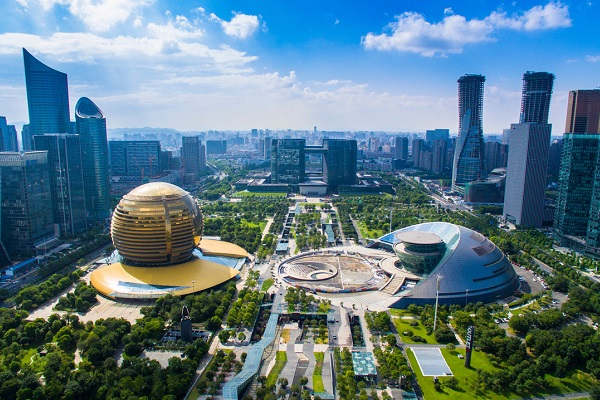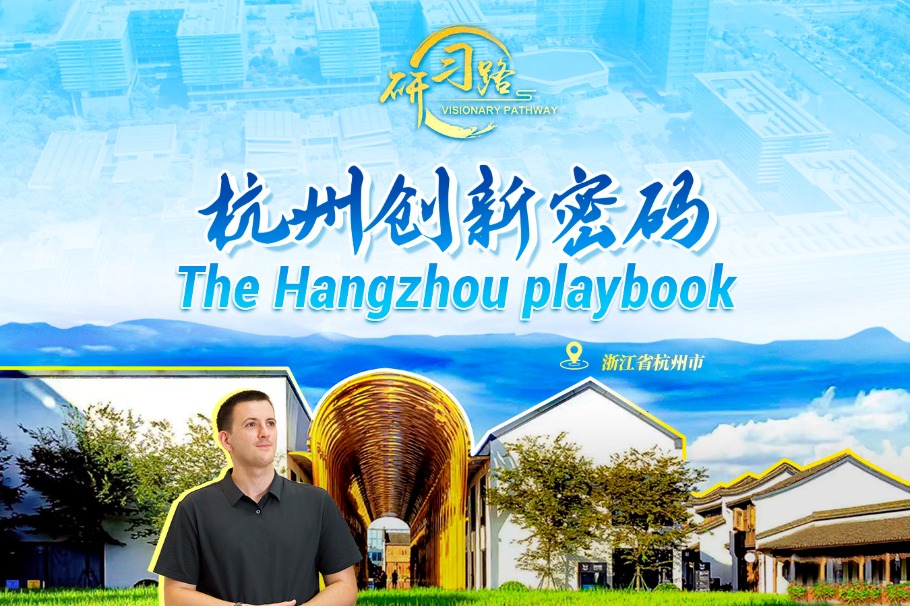Grand Canal mirrors green transition in China's Hangzhou
![1666683493022035447.jpeg The Grand Canal in Hangzhou. [Photo by Zhang Wentao For chinadaily.com.cn].jpeg](https://www.ehangzhou.gov.cn/att/20221025/1666683493022035447.jpeg)
The Grand Canal in Hangzhou. [Photo by Zhang WentaoFor chinadaily.com.cn]
Cruiseboats glide along the Grand Canal in the historic city of Hangzhou, while the loudspeakers are announcing the famous attractions: Gongchen Bridge, Xinyifang, Wulinmen.
There is no shortage of traffic along this waterway in the capital of east China's Zhejiang Province, with visitors keen to sample the architectural delights of a city dubbed "Heaven on Earth."
Among the captains is Song Guangqi, who has steered his boat under the Gongchen Bridge, at the southernmost end of the canal, tens of thousands of times over the years.
These days, as he takes his boat past the confluence of two tributaries -- the Yuhangtang and Xitang rivers, he is pleased to find that a deserted industrial oil depot had been transformed into waterfront parks.
With a history of more than 2,500 years, the Grand Canal connects Beijing and Hangzhou, serving as a significant transportation artery in ancient China. In 2014, a stretch of the canal measuring 1,000 km was declared a world heritage site.
Built in the early 1950s, Xiaohe Oil Depot is representative of the city's old industry. It once supplied the energy to boost industrialization on both sides of this section of the Grand Canal.
The depot is now defunct, but three oil tanks have been preserved as a memorial to the city's industrial heritage. Thousands of holes of different sizes have been drilled into the industrial remains as part of the process of reinforcement and renovation.
Song said his job on the Grand Canal allowed him to witness the development of the Hangzhou section over the decades.
"When I came to Hangzhou in 1999, I followed my relatives working on boats on the canal, doing everything as a sailor, boatman and factotum. Later, I obtained the certificate to become a boat captain," said Song.
In 2010, the transport company Hangzhou Waterbus started recruitment for their cruiseboats, and Song became an employee.
"The ancient city of Hangzhou was laid out along the Grand Canal. During the period of Five Dynasties and Ten Kingdoms (907-979), Hangzhou entered a period of rapid development, relying on the transport of the Grand Canal, and became a famous city in the southeast," Song said.
He often reads books about the Grand Canal's history, so that when tourists on board ask him about the canal, he can provide accurate commentary.
Jiang Weimin, a senior Hangzhou resident, remembers when the canal was not so charming. More than 20 years ago, he set a record by paddling a kayak along the Grand Canal by hand, together with his partner. Passing along the waterway from the south, he was saddened by "black pollutants floating on the canal water."
Since the 1950s, industrial and warehousing enterprises had packed the banks of the canal, taking advantage of the waterway transport.
In the 1980s, hundreds of tributaries feeding into the canal brought more industrial and domestic sewage. There was a popular saying at that time: "If there's a stink in the air, you're in Hangzhou."
Since then, the municipal government has sought to tackle the problem, carrying out comprehensive water treatment measures and landscaping along the canal.
Over the years, the water quality of the Hangzhou section of the Grand Canal has been improved from Class V to Class IV, or even Class III in some areas. Hangzhou has realized the goal of restoring the canal, with clear water, green trees and beautiful scenery along its banks.
-
Visionary Pathway - Hangzhou Playbook
July 15, 2025



